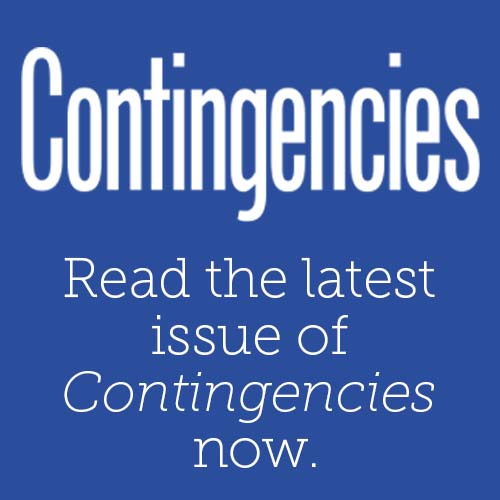This webinar discusses how Precept 13 applies to actuaries and actuarial work, steps to take when faced with a potential Precept 13 situation and issues surrounding compliance with Precept 13, and particular case studies in light of Precept 13 obligations.
The Committee on Qualifications (COQ) responded on Jan. 3 to the National Association of Insurance Commissioners’ (NAIC) Joint Qualified Actuary Subgroup’s (JQA) request to submit comments regarding the definition of a “qualified actuary.” During the NAIC Fall Annual Meeting last month the three NAIC actuarial task forces gave the JQA the charge to “Recommend a uniform definition of ‘qualified actuary’ for life, health and property/casualty appointed actuaries signing prescribed NAIC Statements of Actuarial Opinion, identifying any differences that should remain between lines of business.” In response, the COQ recommended that any definition of a “qualified actuary” for signing NAIC Statements of Actuarial Opinion should include a reference to qualifications under the Qualification Standards for Actuaries Issuing Statements of Actuarial Opinion in the United States.
1) Recommend to the Principle-Based Reserving Implementation (EX) Task Force whether to require actuarial certification for each actuarial responsibility (e.g., NAIC staff, regulators, appointed actuaries, etc.) in PBR. Consider guidance developed by the Appointed Actuary (A/B/C) Subgroup of the actuarial task forces.
2) Determine whether specific continuing education requirements should be established for PBR actuaries and whether those should be regulatory requirements or actuarial professional requirements.
The Academy's Council on Professionalism developed the discussion paper—"The Application of Precept 13 of the Code of Professional Conduct" to help actuaries better understand their obligation to take action if they come across actuarial work that appears to materially violate the Code. The paper includes an infographic that provides an overview of the Precept 13 process triggered by knowledge of "an apparent, unresolved, material violation of the Code" and an appendix that features several hypothetical scenarios related to Precept 13 violations.
Panelists Nancy Behrens and Janet Fagan, vice chairpersons of the Actuarial Board for Counseling and Discipline (ABCD), discuss professionalism topics covered in recent “Up to Code” articles in Contingencies magazine. The discussion includes particulars and case studies of Precept 2 of the Code of Professional Conduct, the pros and limitations of peer review in connection with actuarial work, and ABCD considerations in balancing transparency with confidentiality.
In response to a letter submitted by the Society of Actuaries (SOA) to the Committee on Qualifications (COQ) earlier this year, the COQ has sent a letter to the SOA regarding their request that the COQ modify Section 3.1.1.2 of the U.S. Qualification Standards at this time to include a reference to the SOA as a provider of property and casualty exams to meet the basic education requirements to sign the NAIC Property and Casualty Annual Statement actuarial opinion.
Speakers provide a series of vignettes demonstrating how to apply the Code of Professional Conduct and ASOPs with care and skill. Precept 3 and ASOP No. 41, Actuarial Communications, are used to showcase real-life scenarios. Speakers then discuss key takeaways and steps for heightening the level of professionalism in daily work, including documentation and communication.
The Academy’s Committee on Qualifications is pleased to provide a new professionalism tool to help actuaries gain a better understanding of which continuing education requirements apply to them. View the “Which CE Requirements Apply to Me?” infographic.
The Academy sent a letter to the National Association of Insurance Commissioners describing the many ways its mission aligns with regulators and their goals. The letter was sent in response to a request for comments to a discussion draft paper of the Joint Qualified Actuary (A/B/C) subgroup. As the home for actuarial professionalism, the Academy has long worked to serve both the public and the U.S. actuarial profession, describing this mission as “intended to support the objective of regulators to protect and assist the public.”
The Academy hosted a professionalism breakfast for regulators on August 24 to answer regulators’ questions on a range of topics including actuarial standards of practice (ASOPs), the counseling and discipline process, and how to respond to inadequate actuarial work. Academy professionalism representatives also presented to NAIC’s three primary task forces on the U.S. Qualification Standards, recently exposed ASOPs (including those on principle-based reserving and health care filings), and counseling and discipline activities. For more details, see the August 2013 Actuarial Update.
This webinar helps actuaries to learn more about the new information contained in the revised ASOP No. 1, Introductory Actuarial Standard of Practice. Effective June 1, 2013, ASOP No. 1 is a revision of the previous Introduction to the Actuarial Standards of Practice and includes new content as well as clarification of prior language.
Five years have passed since the U.S. Qualification Standards (QS) were last revised and effectuated. As such the Academy’s Committee on Qualifications (Committee) has decided to undertake a review to determine if there is a need to start the process of considering revisions to the QS. The Academy’s Board of Directors approved the Committee’s plans to begin this process and therefore the Committee is asking all actuaries and the public to provide comments. Learn more about what areas are of particular interest and how you can submit comments.
Presenters cover ASOP Nos. 46 and 47, relating to risk evaluation and risk treatment in enterprise risk management (ERM). They also discuss why ERM standards are needed and how actuaries should comply with them.
The Casualty, Health, Life, and Professionalism Councils sent comments to the NAIC’s Joint Qualified Actuary (A/B/C) Subgroup in response to its request for comments to a list of nine questions in anticipation of the Subgroup’s meeting at the NAIC Spring National Meeting on April 5, 2013.
This seminar is the primary source of instruction for actuaries who wish to be qualified to issue actuarial opinions for either the NAIC Life and A&H Annual Statement or the NAIC Health Annual Statement but may not have met the specific knowledge requirements set forth in the U.S. Qualification Standards. See why so many of your peers find this seminar the most expeditious way to acquire basic education required to obtain health and life qualifications under Section 3 of the U.S. Qualifications. Register early: Seats are limited and fill up quickly!
The Council on Professionalism submitted an additional comment letter to the NAIC’s Joint Qualified Actuary (A/B/C) Subgroup at their request following their last open call on February 13, 2013, wherein the Council more concisely set forth the value of Academy membership and clarified information about the ABCD.
The Casualty, Life, Health, and Professionalism councils submitted comments to the NAIC's Joint Qualified Actuary (A/B/C) Subgroup on the subgroup's two new charges related to defining a "qualified actuary" and recommending a process to address "unprofessional" actuarial work.






